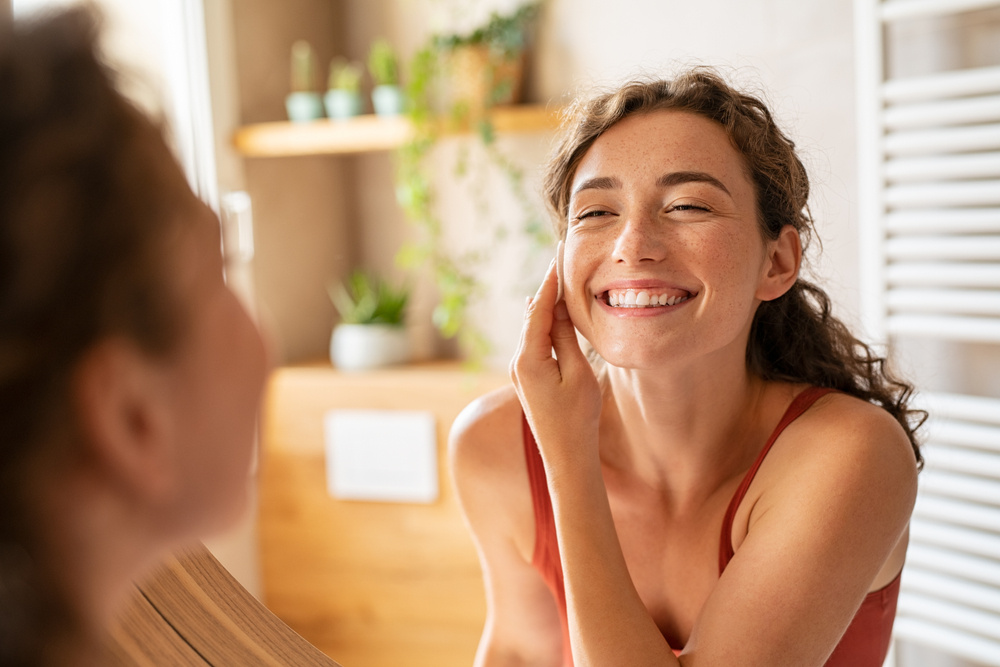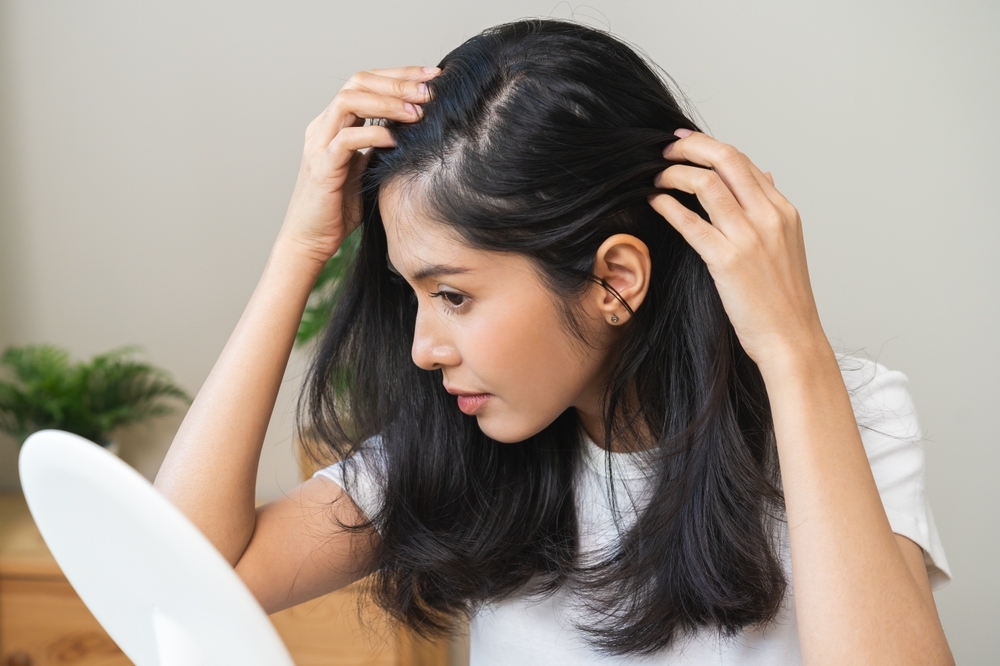You know that person who never wears sunscreen and says they never burn? Did they somehow get the “good genes” that deflect the sun’s harmful rays while soaking up the good ones?
Short answer: no. Anytime you’re in the sun, you’re absorbing ultra-violet rays. And they’re not doing your skin any good, whether your skin shows it right away or not.
Sun: The Great Age Multiplier
We’ve all seen those online quizzes that claim to measure you brain age or health age as compared to your chronological age. Somehow, we could be younger than we actually are!
While those quizzes may or may not be true, there’s one test that will show you an age different than your chronological age – and it’s not a younger age. It’s UV photography, and it will show you the true extent of sun damage that’s invisible to the naked eye.
In a series of photos shown in side-by-side comparisons from the American Academy of Dermatology, the only person who doesn’t have sun damage is the 18-month-old. Even the four-year-old has the beginnings of some harm.
The technical term for the aging effects of the sun is photoaging, also called solar damage, dermatoheliosis, or photodamage. Photoaging is premature aging of the skin caused by ultraviolet A (UVA) and ultraviolet B (UVB) radiation. The radiation can be natural (from the sun) or artificial (radiation from tanning beds or tanning lamps).
Either kind of exposure ages your skin more quickly than chronological aging. It also adds to your risk for skin cancer.
How to Stay Young in Your Skin
We all know we need to protect our skin. Yet it feels so good to bask in the sun! And we feel healthier with that “sun-kissed glow.” We need to rewrite that story and rewire our thinking.
Even on a cloudy day, ultraviolet (UV) rays can still reach you. Remember rays reflect off surfaces like sand, snow, and water (cover up extra if you’re on a boat!). The rays are strongest from mid-morning to mid-afternoon. Check your weather app to see if it tracks UV rays. If it does be extra cautious when you see a UV index of 3 or higher.
To avoid sun damage – and look as young as you feel:
- Stay in the shade.
- Wear sun-protective clothing like hats and long-sleeved shirts.
- Apply broad spectrum sunscreen (SPF 15 or higher, broad spectrum) every two hours.
Can You Undo the Damage?
Depending on when you grew up, being tan may have been the ultimate goal. Or at least, being pale was not “in” or cool. Even if you avoided trends, as a kid you probably played outside without sunscreen, and didn’t always cover yourself from head to toe when going to the beach.
Although most of us have sun damage, we don’t have to live with visibly damaged skin. If you notice these signs of aging and assume they’re just part of life, they might be the result of sun damage (photo aging), not chronological aging.
- Wrinkles
- Age spots
- Loose skin
- Spider veins or “broken” blood vessels (they’re actually enlarged, not broken)
- Hyperpigmentation (blotchy or ruddy complexion)
Treatments include:
- Prescription retinoids
- Microdermabrasion
- Intense-pulsed light
- Microneedling
- Radiofrequency treatments
Complications of photoaging:
Photoaging isn’t just about appearances. As you can guess, sun exposure also has health risks, including:
- Melanoma
- Precancers, such as actinic keratosis
- Making rosacea worse
“Before you get treated for sun damage, talk to a dermatologist,” says Monica Lawry, MD of Duncan Dermatology, a Golden State Dermatology Affiliate. “We can identify if the damage is becoming pre-cancerous or if negative conditions have already developed. Plus, we’ll know the right kind of treatment for you, based on a number of factors.”
Dermatologists can identify precancers, skin cancer or other conditions such as rosacea, acne, or eczema that should be treated as a foundation of skin health. They design thoughtful treatment pathways based on your individual skin type to support the best outcomes for your rejuvenation program. They also know best how to help you maintain your improvement to keep your skin healthy and youthful.
A Highly Visible Sign of Damage: “Age” Spots
One kind of damage is a give-away for too much time in the sun: age spots. These flat brown or black spots come from the chemical melanin. When you expose the skin to too much sun, the skin responds by producing this in a clump. They’re not related to aging, despite the name (another story we need to un-tell ourselves!).
You can counteract age spots to a degree with these treatments:
- Non-prescription: Look for over-the-counter products with hydroquinone, kojic or glycolic acids. Because they’re not prescription, they tend to have lower concentrations.
- Prescription: Your dermatologist can prescribe various prescriptions with retinoid to speed up cell turnover. Picture your body “shedding” the pigmented cells faster than it would otherwise.
- Cryotherapy: Liquid nitrogen freezes the area so that it peels away.
- Chemical peels, microdermabrasion, and laser therapy: While these function differently, they each work to remove outer layers of skin or stimulate more collagen growth. In either case, they speed up the arrival of new skin.
“Especially here in California, we love the sun,” says Dr. Lawry. “And while it’s wonderful and essential, it’s something we need to treat with care. You can enjoy the sun and escape the damage – we just need to unlearn some old habits and adopt some new ones.”







